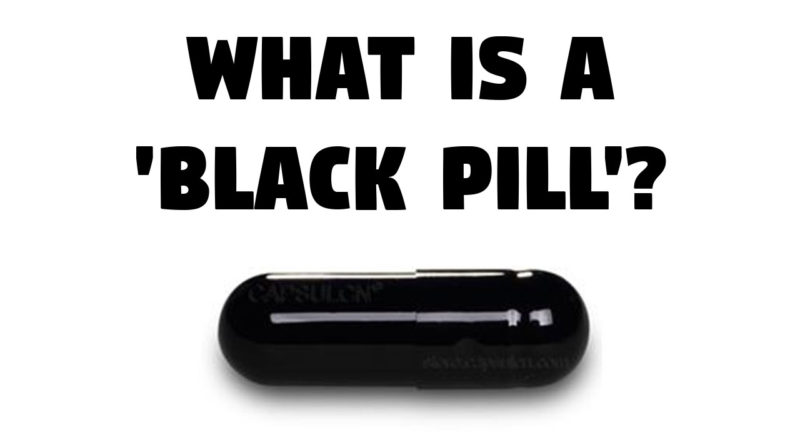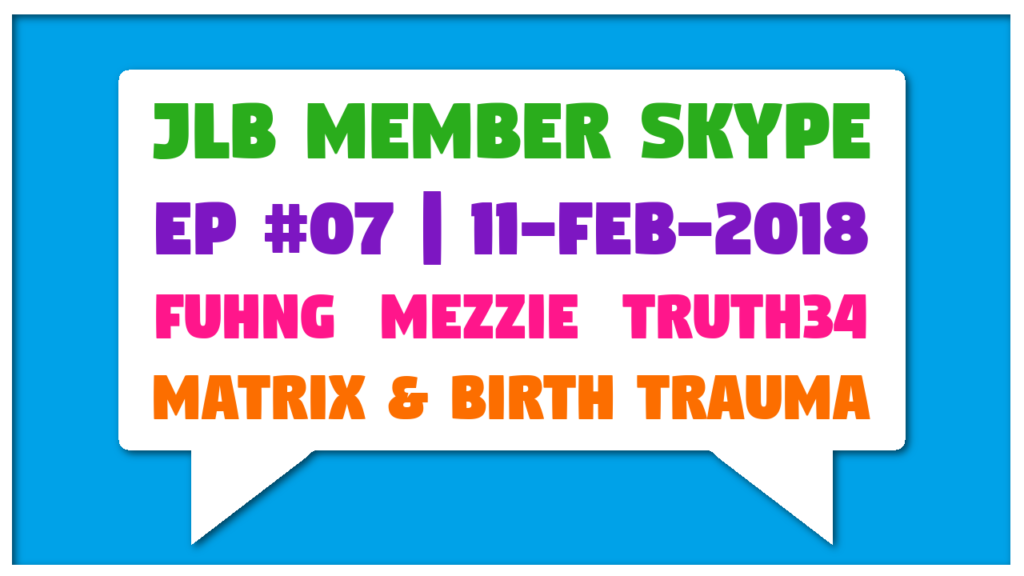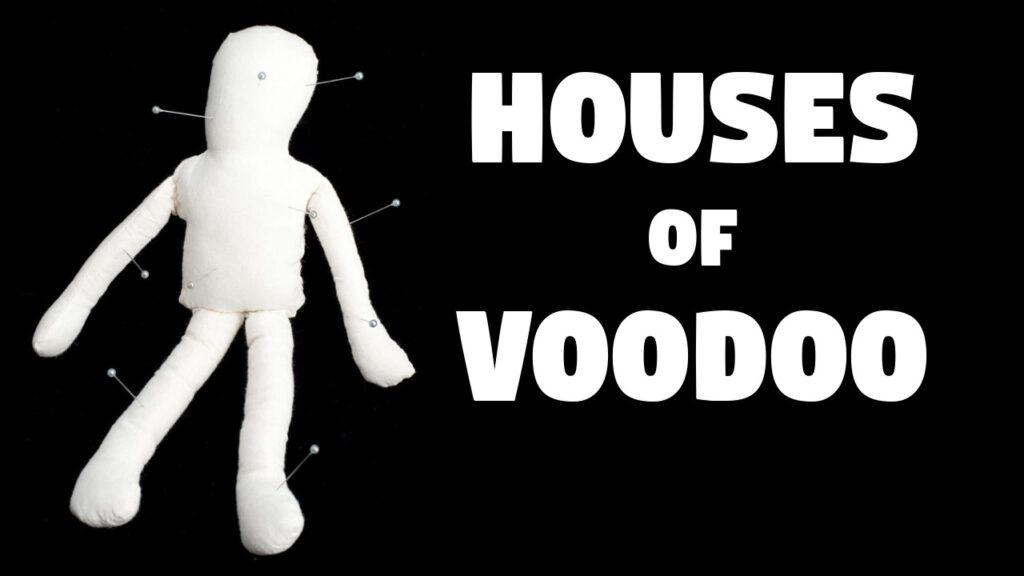What is a ‘Black Pill’? [2022 Update]
What’s the darkest topic you’ve ever looked into?
Do you still believe there is hope for humanity to change course?
Article #38i
What is a Black Pill?
[2022 Update]
Original: 16-Feb-2018
Current: 12-Jan-2022
Introduction
‘The truth is not always a pleasant thing.’
A few years ago on a Member Skype Call I shared, for the first time, an experience which I will never forget:
The day, mid-2016, when I first learned about one of the blackest of pills: ‘birth trauma’.
That particular Member Skype Call received a relatively muted response over the following week or so, which I found surprising at the time.
The muted response, coupled with some correspondence I received privately, encouraged me to go into further detail about the topic of birth trauma specifically, and the broader concept of ‘black pills’.
What you are about to read is an updated version of that article.
The original was published in February 2018; the current version (the one you are reading right now) was published in January 2022.
Most of the original piece is intact.
For the 2022 republish, I have:
i) Updated the formatting
ii) Rewritten a few sections to improve readability
iii) Added some images for illustrative effect
iv) Removed superfluous sections
It has been roughly four years since I first began openly speaking and writing about birth trauma and black pills.
The world has changed dramatically in the time since, as you are well aware.

However, the topic of birth trauma remains to this day one of the darkest fields of inquiry I have ever stumbled upon.
By the time you finish reading this article, you’ll understand what I mean.
Contents
1 – Black Pill Primers
2 – What Makes the Black Pills Different?
3 – The Birth Trauma Black Pill
i) Birth trauma and suicide
ii) C-sections are on the rise
iii) C-sections are more traumatic for mother and child
iv) Putting it together
4 – A Simple Process
5 – Implications
6 – A Bottle of Black Pills
7 – Concluding Thoughts
1 – Black Pill Primers
In the ‘Welcome‘ video for new Members, and in the third Member’s video ever published, entitled ‘Blue Pill – Red Pill – Black Pill‘ (13-Dec-2016), I try to make a simple but important point:
When one begins truly attempting to see the world for what it is, he or she is likely to discover some rather depressing facts about this reality.
Of course, just about anybody who joins this site will have already experienced some of the emotional / spiritual downsides of ‘truth’ for themselves.
Discovering just how far ‘media fakery’ can go may be somewhat of a saddening (and / or maddening) experience at first, especially for those us with idealistic dispositions.

It can all come as something of a shock:
* First, learning about the fakery, and then
* Second, realising how little the people in our lives seem to care when we try to share this information with them.
However, the discoveries I call ‘black pills’ are on a different level.
One can learn about all kinds of mass deceptions without necessarily stumbling upon the black pills.
I first arrived in the ACT realm circa 2013, and began producing my own content in 2014.
By the time I began creating the website you see today, around mid-2016, I had already come to understand that there are some ‘hellish’ aspects to this existence, things that make the usual hoaxes (such as fake terrorist attacks and so forth) seem trivial by comparison.

I felt it was my responsibility to make this clear to new Members right from the outset:
Not all of the lesser-known ‘truths’ are nice to uncover.
By the end of 2016 I had already been knocked around by some of my own discoveries, and could sense that worse was yet to come.
I like to to make light of the hoaxes, I enjoy creating videos which attempt to find joy in pointing out the fakery.
It is fair to infer that some people who make their way to this website will be attracted to the positive energy I am trying to share.
It would therefore be remiss of me to not point out that, although there are plenty of lulz to be had once one knows just how absurd this realm really is, there may also be some tears of sadness to be shed — be those tears metaphorical or literal.
My point here being that I have tried, and the record will show that I have tried, to be upfront about this right from the beginning:
There are some black pills to be swallowed as part of the process I call deprogramming, and any good person is liable to be deeply affected when they first ingest some of these truths about our reality.
2 – What Makes The Black Pills Different?
In a word: nature.
What these black pills deal with is the nature of this reality, nature which we as individuals simply cannot change.
The red pills generally allow us at least some hope of change in the ‘future’.
For example, if the masses were fooled by fake planes on 9/11, we can at least imagine in our minds a ‘future’ in which people are trained in the art of fakeology, perhaps as part of their formal education, such that cartoon planes would simply not enough to fool the masses.

Whether or not this change will ever happen, we can at least envisage it.
We can imagine that the current state of things, even if it may at times seem bleak, is a product not so much of nature, but instead of the actions by the bad guys at the top — bad guys who could be supplanted by better people with better intentions.
Put another way, the red pills tend to leave open the possibility that the inherent nature of humanity is still largely as we imagined it to be prior to learning the new truths.
We can remain optimistic, for instance, that the average human is born capable of behaving in a way which we personally deem to be ideal or virtuous.
Where they fail at present, we can imagine that this is a result of nurture rather than nature.
The black pills, on the other hand, offer no such hope.
When they are fully ingested, once they take effect, the immutability of nature comes into focus, often painfully so.
There is no ‘hope’ for change in the ‘future’; this is just how it is.
Damn.

To help illustrate the distinction I am trying to make, consider the case of Neo in The Matrix.
Once he takes the red pill, he endures a distressing realisation about his existence.
The ship he is ‘saved’ by is cold and sterile, the world he thought he knew is gone for good.
The enemy, which he has been contracted into fighting a war against, turns out to be a truly formidable foe.
Suddenly, taking the red pill seems like it may have been a bad idea…
But there is hope!
Neo is surrounded by several other ‘awake’ people, and together they are going to battle the agents, and eventually, maybe, with a bit of luck, they might make it to ‘Zion’ after all.
Their odds may seem slim, the dark forces may appear insurmountable, but there is hope.
What if Neo had taken the red pill, seen through illusion, and then awoken in his bed as usual?
What if there were no ‘real world’ outside of the matrix in which to do battle?
What if there was no cold and sterile ship, no fellow ‘red pillers’, and no chance of ‘waking up’ anybody else still ‘stuck in the matrix’?
What if Neo saw things for what they were, but had no ‘hope’ of change?
This is akin to the black pill.
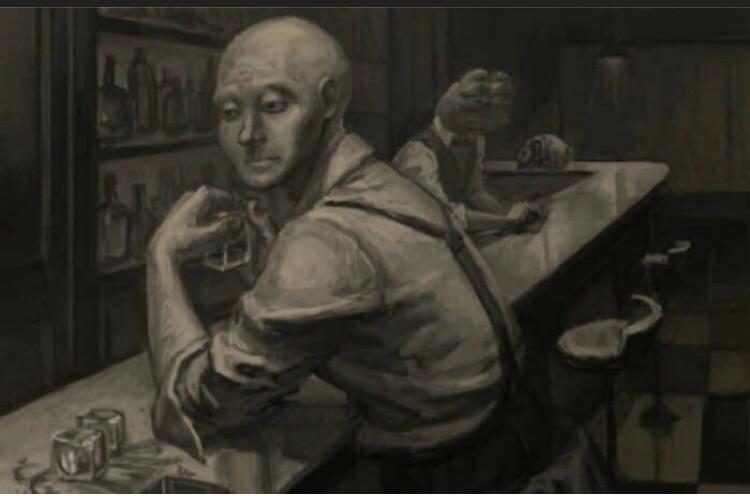
The realisation that there are things about this realm which are not only offensive to our sensibilities, but which we simply cannot and will not be able to change.
This is worse than fighting against a formidable foe:
It is realising that there is no singular foe to fight.
It is trying to simultaneously process two related, but separate, realisations:
1) A new, unpleasant truth about reality, and
2) The fact that there is absolutely nothing one can do to change this aspect of reality.
To ingest the black pill, especially when the effects first kick in, is to experience a sensation of helplessness and hopelessness which words can barely describe.
3 – The Birth Trauma Black Pill
There is a lot which can — and, arguably, should — be said about birth trauma.
For the time being I will simply provide some further context to what I explained in the Member Skype call mentioned earlier.
MSC #07 – Matrix and Birth Trauma (11-Feb-2018)
That podcast ought to be enough of an introduction and to the key concepts concerned.
It provides the necessary foundation for what it to follow.
However, even if you have yet to listen to MSC #07, there is enough information in the rest of this article to bring you up to speed on the most important details.
i) Birth trauma and suicide
A 1987 study in Sweden found a statistically significant correlation between birth trauma and suicide later in life.
The striking thing about the findings of the study is that the type of trauma suffered at birth had a statistically significant correlation with the type of suicide committed later in life.
…suicides involving asphyxiation were closely associated with asphyxia at birth, suicides by violent mechanical means were associated with mechanical birth trauma and drug addiction was associated with opiate and/or barbiturate administration to mothers during labor.
The corollaries of this ought to be obvious:
Although our conscious minds may remember nothing from the first few years of our lives, our ‘subconscious’ may in fact be deeply affected by everything which happens from the moment we enter this realm.
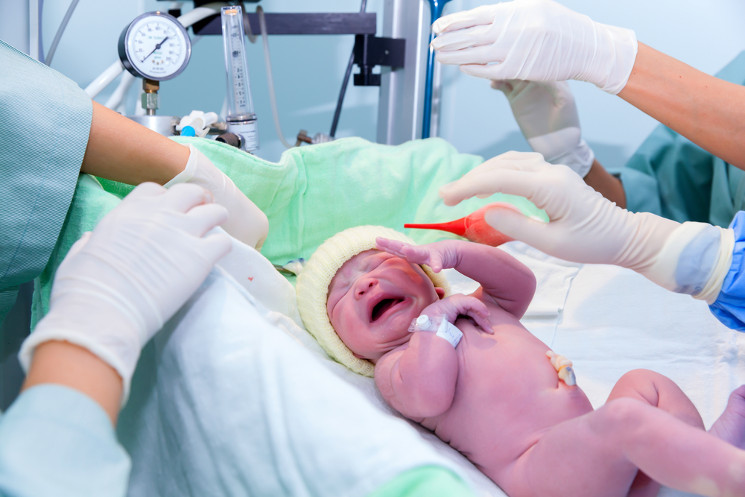
In medical literature this is often termed ‘imprinting’.
Contrast this with how the masses tend to view childhood:
‘They don’t remember it so it doesn’t matter (lol)’
Then think about it logically:
An infant’s mind is like a blank slate at birth, and their bodies are being exposed to non-womb stimuli for the very first time.
If there were ever going to be a moment in a person’s life when their subconscious could be ‘imprinted’, it makes sense that it would be at this key moment.
A 1998 study (by the same lead authors as the aforementioned 1987 study) in Sweden found a statistically significant correlation between birth trauma and suicide in general, using a different data set to the earlier study.
The more trauma suffered at birth, the greater the likelihood of suicide later in life.
The estimated relative risks in men of a single and multiple trauma (>2) were 2.2 (95% confidence interval 1.3 to 3.6) and 4.9 (1.8 to 13) times higher than if no trauma had occurred respectively (fig 4).
The corresponding risks in women were 1.02 (0.5 to 2.1) and 1.04 (0.2 to 4.6).
This appears to confirm the findings of the earlier study:
Those first few moments in this realm seem to be able to affect us on a deeper level, with longer-lasting consequences, than most of us could have ever imagined.

ii) C-sections are on the rise
Caesarean section births are becoming more commonplace all over the world.
From a 2016 study:
According to the latest data from 150 countries, currently 18.6% of all births occur by CS… the trend analysis showed that between 1990 and 2014, the global average CS rate increased 12.4% (from 6.7% to 19.1%) with an average annual rate of increase of 4.4%.
The largest absolute increases occurred in Latin America and the Caribbean (19.4%, from 22.8% to 42.2%), followed by Asia (15.1%, from 4.4% to 19.5%), Oceania (14.1%, from 18.5% to 32.6%), Europe (13.8%, from 11.2% to 25%), Northern America (10%, from 22.3% to 32.3%) and Africa (4.5%, from 2.9% to 7.4%).
To make the trend more clear, consider these statistics from the Australian Department of Health:
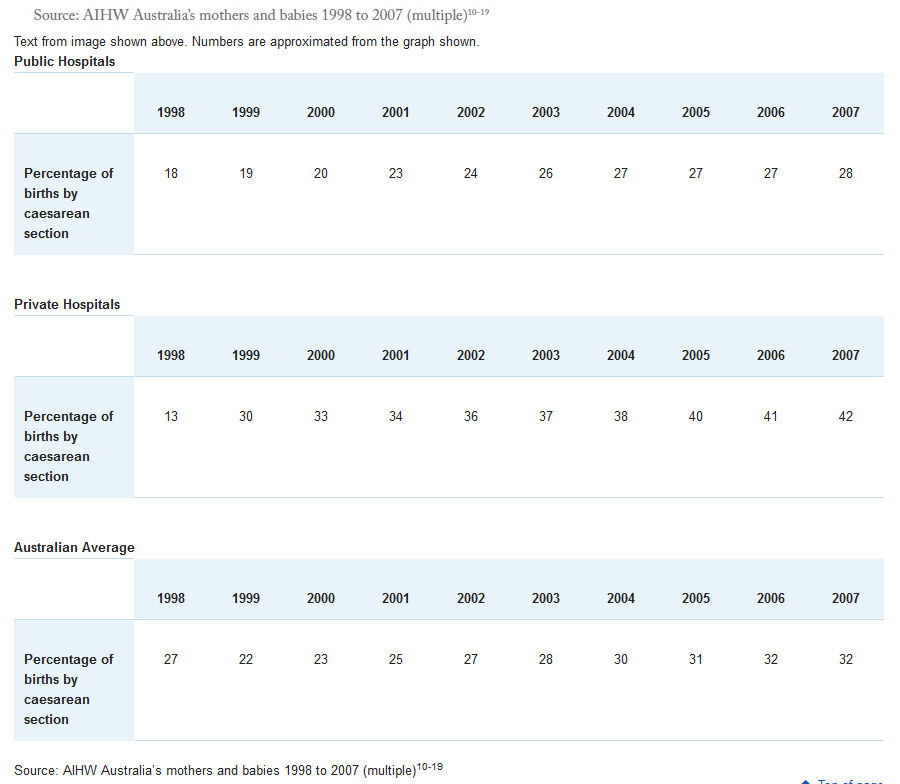
Although private hospitals have a far higher rate of C-section birth than public hospitals, the same trend is evident in both: the trend is up.
There are some important implications from this.
One is that the trend is towards more C-sections, not less, despite the available scientific data concerning the outcomes of these procedures.
In the space of one human generation, places like Australia (Oceania) saw the C-section rate rise from one-in-seven to one-in-three.
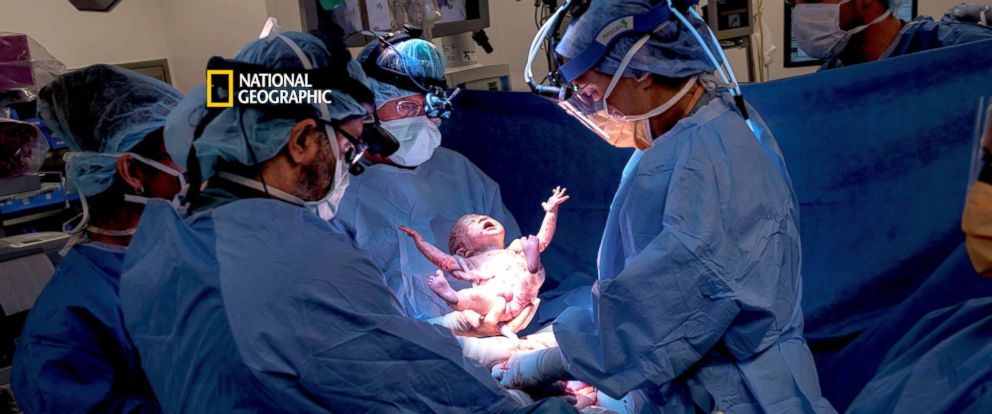
Let me repeat that: in one human generation, the C-section rate rose from 1/7 to 1/3.
Also note that although C-sections are now seen as relatively ‘normal’, it has not been this way until very recently in recorded human history.
It seems fair to infer that many of the longer-term consequences of C-section births will only become more apparent as the cohorts born in the 1990s and beyond reach adulthood (and middle age).
In other words, if C-sections are deleterious on the micro and / or macro level, the worst is yet to come.
iii) C-sections are more traumatic for mother and child
The experts and authorities themselves fully admit that C-sections are more dangerous for mother and child.
Below is a table from a report by the American College of Obstetricians and Gynecologists.
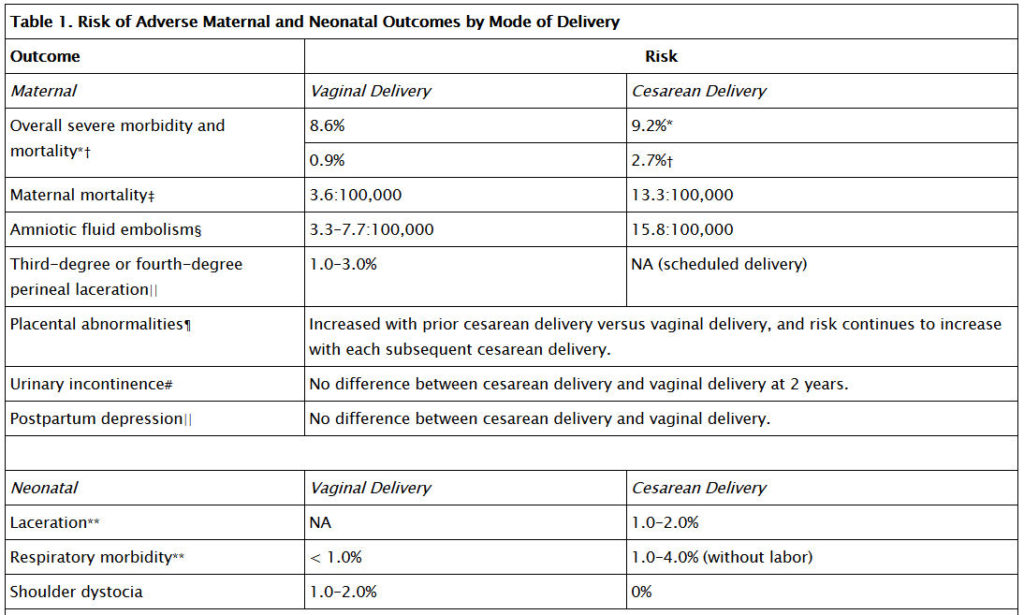
Look at maternal mortality: 3.6 : 100,000 vs 13.3 : 100,000.
13.3 / 3.6 = 3.7
This means that C-section is 3.7 times more likely to result in death of the mother than vaginal birth.
I decided to check the ACOG’s source for this claim, which led me to a 2006 study published in Obstetrics & Gynecology.
Here are their findings:
After adjustment for potential confounders, the risk of postpartum death was 3.6 times higher after cesarean than after vaginal delivery (odds ratio 3.64 95% confidence interval 2.15–6.19).
Both prepartum and intrapartum cesarean delivery were associated with a significantly increased risk.
Cesarean delivery was associated with a significantly increased risk of maternal death from complications of anesthesia, puerperal infection, and venous thromboembolism.
My math says 3.7x
Theirs says 3.6x
Let’s go with theirs.
This means that C-section is 3.6 times more likely to result in death of the mother than vaginal birth.

Then look through the other comparisons in the ACOG chart above and see for yourself just how much worse C-sections are in several other ways.
Ask yourself:
Is the health of mother / baby a binary thing (either ‘alive’ or ‘dead’)?
Or is it more logical to infer that, if there are three times as many maternal deaths involved in C-sections, then perhaps these operations are more harmful / stressful in general (i.e. even when both mother and baby survive and appear to be okay)?
The answer is obvious to me:
More mothers die during / after C-section because they are more harmful, and this harm will be felt even by mothers / infants who survive.
Let’s think about it logically.
Putting the statistics aside, which of the following seems more likely to cause stress for mother and child:
i) A natural, vaginal birth, or
ii) An operation in which the mother is cut open and the baby is pulled our of her body through the wound?
Again, the answer is obvious to me: it shouldn’t take statistics to see how ridiculous this situation is.
The female body is built (either by accident or by design) to deliver babies through the vaginal canal.
The womb is not built to be cut open with a scalpel.
As for the health outcomes for the infant, again I checked the sources provided by ACOG, and tracked down the relevant studies.
Those interested are encouraged to check out page 11 of this 2011 study published in the American Journal of Perinatology.
I will outline here some of the key findings.
Infants born via C-section are at greater risk of:
* Fetal laceration (i.e. the baby is cut by the scalpel) which occurs in 1-2% of C-section births.
* Respiratory morbidity (i.e. the baby needs to be taken to intensive care) which occurs in 1-4% of C-section births.
* Increased risks of asthma and food allergies.
Need I say more?
iv) Putting it together
Let’s revisit what was established in the preceding sections:
i) There is a demonstrated correlation between birth trauma and suicide later in life.
ii) C-sections are on the rise across the world.
iii) C-sections cause significantly more trauma to mother and child than vaginal births.
You can see where I am going with all of this.
I’m not putting forth a ‘conspiracy theory’.
I am presenting official statistics and then making logical inferences from those statistics.
The argument I am putting forward could be written as thus:
Premise 1) Trauma at birth can cause deep, significant, ‘subconscious’ psychological problems for humans which manifest later in life.
Premise 2) C-section births are on the rise all over the world.
Premise 3) C-section births are significantly more traumatic for newborns than vaginal births.
Conclusion: A large and growing proportion of the world’s population has been seriously damaged in ways they can barely imagine.
And this is only focusing on C-sections.
There are other types of birth trauma going on every day, such as ‘induced labour’, a topic which deserves its own dedicated piece.
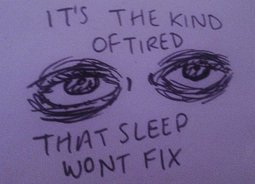
4 – A Simple Process
As discussed in FMVU #08 – Who’s Watchin’ Me, there is a simple framework which I try to follow when engaging in research and content production:
1) Identify relevant information / facts / evidence.
2) Process this information via the application of logic; arrive at sensible conclusions.
3) Present my findings in a manner which is most amenable to those trying to understand what I am trying to convey.
Or, in other words:
Input -> Process -> Output
Or, as it might be explained in ‘trivium’ instruction:
Grammar -> Logic -> Rhetoric
In this post I have identified a range of claims, based on evidence, with direct references to sources.
This may be seen as the ‘grammar’ or the ‘input’.
Then I have considered the various claims / evidence in isolation and as a whole, to determine what conclusions can be drawn from the relevant information.
This may be seen as the ‘logic’ or ‘process’.
Finally I have written this piece in such a fashion as to convey the ideas / information to you, the reader, in as effective a manner as possible.
This may be seen as the ‘rhetoric’ or the ‘output’.
Even before looking at the implications of what has been discussed, one might find value in considering the input, the process, and the output; the grammar, the logic, and the rhetoric.
If one determines for him or herself that the process has been followed properly and the conclusion(s) are sound, then the exercise of reading through this post will have already, I hope, been worth the time invested.
However, the question might arise: how is this such a ‘black pill’?
Some people are being traumatised at birth. Maybe we all were. So what?
It’s a shame, but how is this significantly worse than the other things that are going on in the world today?
5 – The Implications
Also discussed in FMVU #08 is the fact that the simple three-step process elucidated above may not always lead those engaged in it to ponder / realise the implications of the conclusion(s).
For example, one may follow the three-step process, when revisiting what we are taught as ‘history’, and arrive at the conclusion that ‘history’ as we know it is make-believe.
For those who arrive at this conclusion, it can be a rather startling revelation, so much so that it may be easy to forget to take a step back and think through the implications this new perspective can / should lead to in our broader frameworks.
Put another way, it is easy to to focus on the conclusion of one chain of research / thinking, and forget to then incorporate that conclusion as the premise of a new chain of research / thinking.
If it is the case that:
i) Birth trauma is on the rise
ii) Birth trauma has significant, long-term effects on those subjected to it
iii) We have barely begun to see the long-term effects of mass birth trauma on the micro and the macro levels (i.e. for the individual and for society)
iv) Things are only going to get worse
Then…
a) What does it imply about the inherent propensity of humans to be easily persuaded into self-destructive behaviour?
b) What does it suggest about the effect of the internet and mass-communication (when everything I have shared with you is publicly-accessible and yet widely-unknown)?
c) What does the answer to (b) lead one to infer about the likely direction society / humanity will take ‘going forward’?
Or, to be more blunt, what does it tell us about those who still harbour hope that somehow the trend of dehumanisation in this realm is going to turn around?
And, once we answer these questions honestly, we might move on to the next:
What does all of this tell us about the nature of this realm and the future of the ‘humans’ within it?
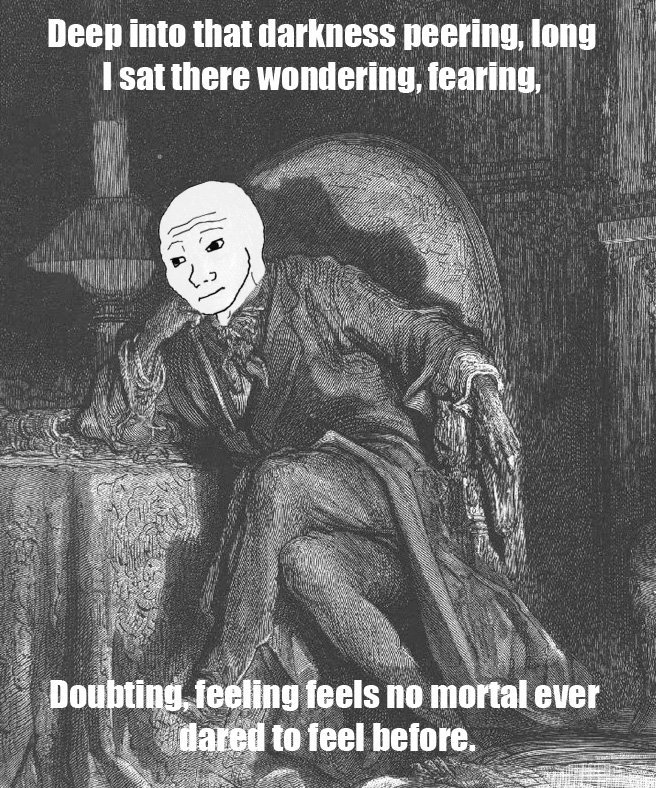
6 – A Bottle of Black Pills
In this post I have only touched on one of the Black pills which have had a major impact on me over the past few years (i.e. birth trauma), and I have focused only on:
* one specific type of birth trauma (i.e. C-section delivery), and
* some of the scientifically-admitted harm it causes
I haven’t even touched upon the more esoteric / spiritual elements of C-section practise which I have uncovered.*
*And which, upon discovery, shook me to the depths of my miserable soul.
In other words, what we have covered here is merely the tip of the Black pill iceberg.
7 – Concluding Thoughts
[Note: This section, as with the others, was written in 2018. I have left it mostly ‘as is’ to convey my sentiments at the time]
Normally I revise the key points in the ‘conclusion’ section.
Perhaps in future I will come back and amend this part of the article.
For now, though, I am pretty tired.
I spent last night and now several hours after work today researching and writing this piece.
All of the key info is there.
I’m sitting at the local McDonalds, where I typically do my work on this operation*, watching fat parents feed their fat children fat food, and I am seeing family dynamics at play that most people would not notice unless it were pointed out to them.
Cucked fathers. Overbearing mothers. Black pills for another day…
*Back when I lived in Brisbane, I used to take my laptop to the local McDonalds, order a coffee, and sit there for hours, working on johnlebon.com. Those were the days…
It’s funny, when I originally wrote 37 Things Normies Believe, I was sitting at a(different McDonalds, and the working title of the piece was ‘Dr Blackpill or: How I Learned to Stop Worrying and Love Despair’, a cheeky homage to the Kubrick classic.
At the time I was still coming to grips with some of my first real black pills, and felt as though I had begun to make peace with what I had learned.
I suppose, looking back, there were some positive signs that I was indeed making progress but, at the same time, I probably knew full well that worse was yet to come.
And it was.
Some of the things I have discovered in just the past six months are in many ways just as black pill-ish as what I discovered about birth trauma in mid-2016 — if not more so.
As I sit here now, I accept that worse is probably still yet to come, ‘unknown unknowns’ which might reveal themselves to me when circumstance dictates they do so.
When I initially went to write the byline for this piece, my first thought was to type, ‘The truth is not always a pleasant thing’.
It occurred to me that I ought to google that phrase to see if it were attributed to somebody and, if so, look further into that person.
Well, perhaps my subconscious was talking to me…

Members
Be sure to check out my latest one-hour presentation, which builds upon the article you have just read.
JLBA #87 – Houses of Voodoo (11-Jan-2022)
Are you familiar with the term ‘nuchal cord’?
Have you ever had to stand up to the people in white coats?
Is anybody safe from the power of mind control magick?
Download or stream HERE.
Not yet a Member?
You’re invited to join us!
Unlock hundreds of hours of exclusive content
and get access to our Member-only discord server
JOIN NOW — CLICK HERE
Still Undecided?
Here’s what some of the current Members have to say…
TNG

Hando
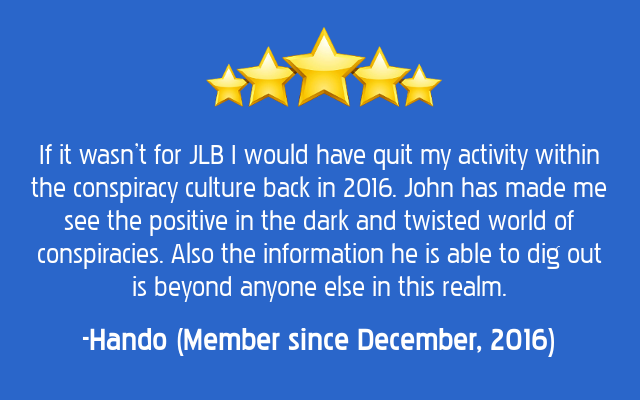
Dante from New York
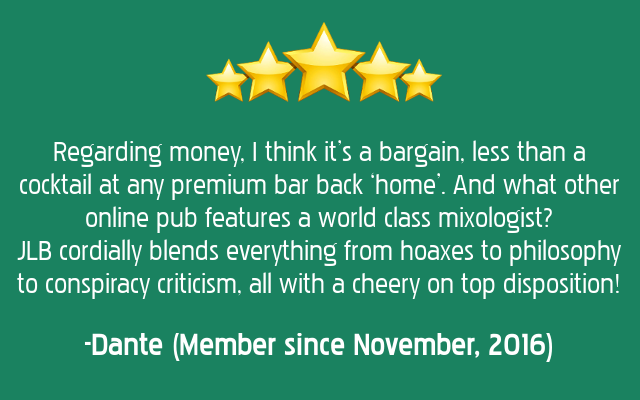
JOIN NOW — CLICK HERE 🙂
Support independent media and get all the benefits which come with it 😎
Credits

Production notes. Written across the evenings of Thur, 15-Feb and Fri, 16-Feb. Slight modifications made 6-Jan-2022 and 12-Jan-2022 as part of Free Content program. On Friday (Feb 2018), the nearby McDonalds was inundated by lemmings due to a power outage in the surrounding neighbourhood, which had been caused by a major storm. What a sight to behold. Probably influenced final section(s) of piece, possibly for the better.

